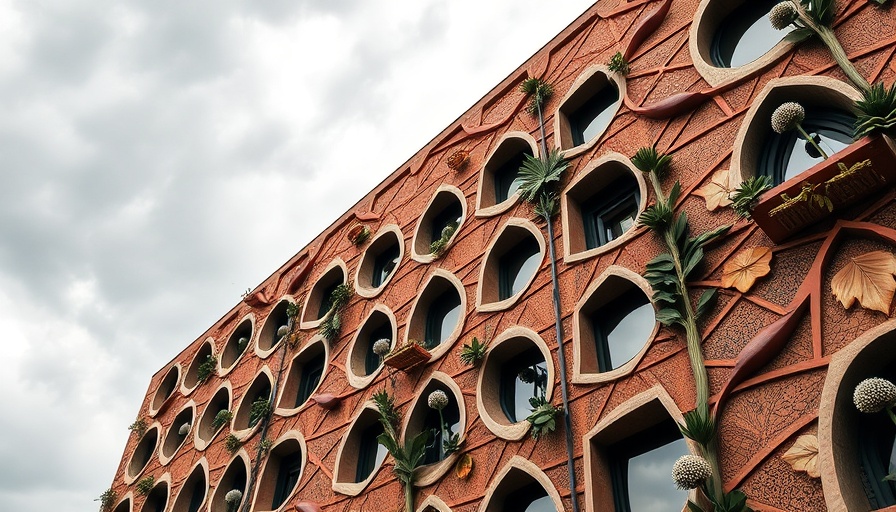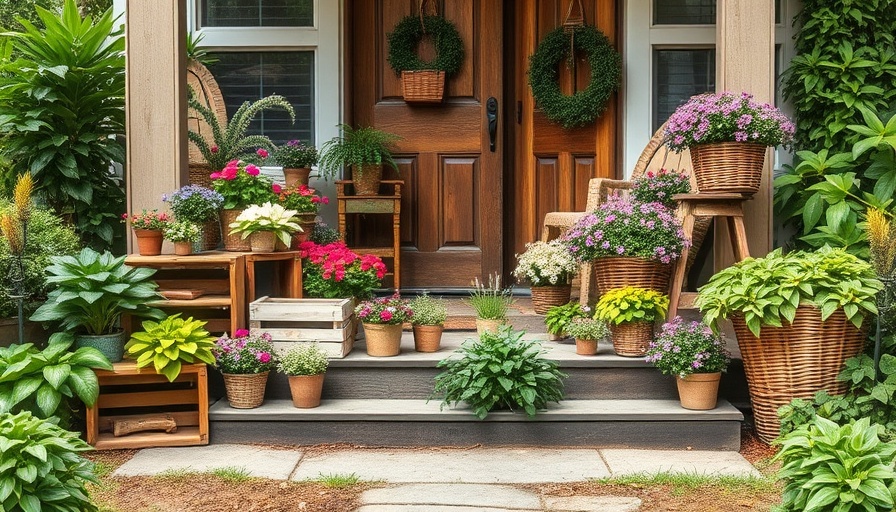
Nature-Infused Designs: Revolutionary Architectural Trends
When it comes to architecture, nature is more than just a backdrop; it’s an endless source of inspiration and wisdom. Recent innovations have led to stunning designs that mimic the intricacies of the natural world, resulting in buildings that not only serve their functionality but also promote sustainability. The video "Design Inspired by Nature #shorts" sparks an intriguing discussion on integrating natural elements into our built environment. Here, we explore four remarkable buildings that exemplify this trend, showcasing how these designs can inspire homeowners to rethink traditional construction methods.
In "Design Inspired by Nature #shorts," the discussion dives into innovative home designs influenced by the natural world, exploring key insights that sparked deeper analysis on our end.
The Eden Project: Nature’s Geometric Brilliance
The Eden Project in Cornwall, England, is a masterpiece that encapsulates the delicate geometry of soap bubbles. This world-famous structure houses the world’s largest indoor rainforest and serves as a testament to how natural forms can lead to high functionality without compromising on aesthetics. The bubble-like enclosures are not only visually stunning; they are also lightweight and engineered to allow maximum light while providing a nurturing environment for diverse plant life. Homeowners can take inspiration from this idea by incorporating rounded, soft forms in their designs that invite nature inside and create a harmonious flow between indoor and outdoor spaces.
Pavilions of Sustainability: Flax Fibers Transforming Spaces
Another groundbreaking structure featured is a pavilion crafted from wound flax fibers. This building highlights how working with regional materials can yield powerful sustainability results. Flax is fully renewable, biodegradable, and complements the ecological conditions of Central Europe. By utilizing local resources, homeowners can reduce their carbon footprint while supporting local economies. Imagine a home adorned with biophilic design elements that remind you of the prickly pear cactus—flexible and sturdy, yet perfectly integrated into your surroundings. This choice not only diversifies the aesthetic appeal but also enhances sustainability in your building projects.
Observation Through Nature: The T Observatory
The T Observatory takes a unique approach by encapsulating the essence of a bird's nest. Located within a nature reserve, this wildlife observation hut seamlessly blends into its environment while offering a protected space for viewing local wildlife. Made from local timber, the structure showcases how the natural world can inform the creation of safe havens for both people and wildlife. As homeowners consider the placement and materials of their own builds, the concept of creating spaces that harmonize with the natural landscape becomes increasingly relevant.
High-Strength Honeycombs: The Hive House
Incorporating the design of honeycombs, the Hive House demonstrates how nature’s designs offer solutions that are both functional and economical. The hexagonal shapes of honeycombs provide exceptional strength while minimizing the material used—a principle that can be applied in residential design to enhance durability without sacrificing aesthetics. Homeowners looking to create efficient, energy-saving structures can take cues from this building’s design, whether installing hexagon-patterned tiles or using lightweight materials that echo the strength found in nature.
Looking Forward: Embracing Natural Inspiration in Home Design
As we move forward, it’s crucial to embrace the lessons of nature in our home designs. By stepping away from rigid, conventional structures and seeking inspiration from the organic forms around us, we can create homes that are both innovative and sustainable. This shift not only opens a pathway toward environmentally conscious living but also invites us to experience a deeper connection to the natural world.
How to Incorporate Nature-Inspired Elements in Your Home
For those eager to adopt this trend, begin by observing your immediate environment. What natural shapes, colors, and materials inspire you? Consider integrating rounded furniture, natural fabrics, and local materials into your design. Engaging with nature doesn’t require a complete overhaul—small changes, like adding plants or choosing earth-toned paints, can make a significant impact. Ultimately, the goal is to create a tranquil, harmonious space that embodies the beauty of the natural world.
In a quest to achieve sustainable living, it's vital to remember that nature has perfected its designs over billions of years. So, why not draw from that expertise? Let’s take a step back from the concrete blocks and unyielding angles of traditional architecture and look to nature for smarter, more sustainable choices. Feel inspired by these examples? Share this article with a friend who might be interested in nature-inspired home design!
 Add Row
Add Row  Add Element
Add Element 


 Add Row
Add Row  Add
Add 


Write A Comment